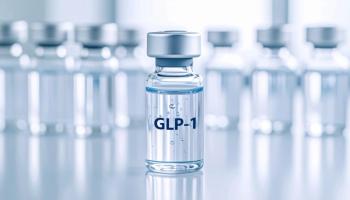
Considerations for Treating Patients with CDK4/6 Inhibitors
Considerations for administering CDK4/6 inhibitors and counseling patients with breast cancer on potential adverse effects.
Transcript
Sara M. Tolaney, MD, MPH: Biologically, one has the advantages of taking a drug continuously, such as the way abemaciclib is administered. Mechanistically, these drugs are halting the cell cycle. They’re not putting the cell into senescent state by halting the G1/S transition in the cell cycle. The thought is that if you give the drug continuously, you potentially leave that cell in a prolonged senescent state that can then eventually lead to apoptosis.
Preclinically, there is some concern that if you stop the drug and you give intermittent dosing, is it possible that those cells could sort of wake up again during that week off? Then you’d have to put them, again, to sleep with a subsequent cycle. And so, there may be some advantage with continuous dosing. I think some people have argued that it’s possible that’s why abemaciclib has the 20% monotherapy response rate. Palbociclib and ribociclib are not associated with significant monotherapy activity. So it may be related to this whole idea of continuous dosing. Clinically, we used to give these drugs when they were in clinical trials. At that time, we weren’t so smart and drugs weren’t packaged appropriately. We would just give patients a supply of palbociclib or ribociclib, and it wasn’t just the 21 days’ supply. I think Lindsay and I could both say that doing that was a little challenging. We had patients who would forget. Let’s say you’re taking an aromatase inhibitor with it, which is dosed daily and continuously. Then you’re taking another drug that’s dosed only 21 days on, 7 days off. It becomes a little confusing. Do you think that you’re just going to keep taking your CDK4 or CDK6 inhibitor along with your endocrine therapy? You’ll obviously take too much, which could run into toxicity problems—particularly neutropenia. But again, the drugs are now packaged appropriately, so patients only get their 21 days for their regimen. Then they have to go refill the prescription. And so, we haven’t run into that challenge. I think the challenge that I run into more often is this whole idea of whether you need to dose modify and then start the cycle. That’s something we’ve run into in the clinic.
Lindsay Shaw, NP: Right. For patients who come in on day 15 for their lab check and are low, the questions are: Will they come back a week later? Will they get their labs checked somewhere else? When will they restart? What dose will they restart at? So I always try to tell people to be patient, or to try to be patient, for their first few months while we work it out. But after the first few cycles, we usually know what dose they’re going to need and where they’re going to be getting their labs. I tell people, “Just stick it out for the first few months, and we’ll get you on a plan.”
From an adverse-effect standpoint, it’s a little more straightforward with palbociclib. Most patients tolerate that drug pretty well right off the bat, except those who experience neutropenia and need dose delays and interruptions. Particularly with abemaciclib, which can cause more diarrhea and gastrointestinal symptoms, those are the patients for whom I really say, “We’re going to work this out. Try to work with us and be patient. We’ll get you on the right dosing schedule.” But that agent is associated with some additional challenges. But most of the patients are expecting the issues. We prepare them have a good plan to manage them. So it’s not unexpected; it’s just a matter of getting through it. Again, I think most patients are thankful to be on an oral therapy as opposed to an intravenous chemotherapy. Very few people are unwilling to put up with that, at least in the beginning.
Sara M. Tolaney, MD, MPH: I totally agree. I think it’s a matter of patient education, particularly when we’re starting a drug that we’ve counseled them on about expected toxicities and how to manage them. With abemaciclib, for example, we know that about 80% of people are going to experience some level of gastrointestinal adverse effects. And so we let them know about that. We also counsel them on what to do if that occurs. We like our patients to call us if they experience any diarrhea. It’s important for us to know if they are having persistent—for example, grade 2—diarrhea that lasts over 24 hours. Then we like to hold therapy and consider modifications.
We also counsel our patients to make sure they have purchased loperamide prior to initiating therapy. They have it on hand, and we’ve instructed them on how to use it. That makes a world of a difference. We also know that toxicity is very dose responsive. If we reduce the dose of abemaciclib from 150 mg bid [twice a day] down to 100 mg, we definitely see improvements in symptoms and patients tolerate it well. And now I think I feel comforted because I’ve also seen the data looking at outcomes based on patients who’ve experienced diarrhea versus not. There is really no difference in progression-free survival, whether their dose is modified for diarrhea or not. Certainly, I think that’s very reassuring to see. And so, I think our patients do very well simply because they know what to expect. They know how to manage the adverse effects, and we can help guide them through therapy.
Newsletter
Stay informed on drug updates, treatment guidelines, and pharmacy practice trends—subscribe to Pharmacy Times for weekly clinical insights.

















































































































































































































